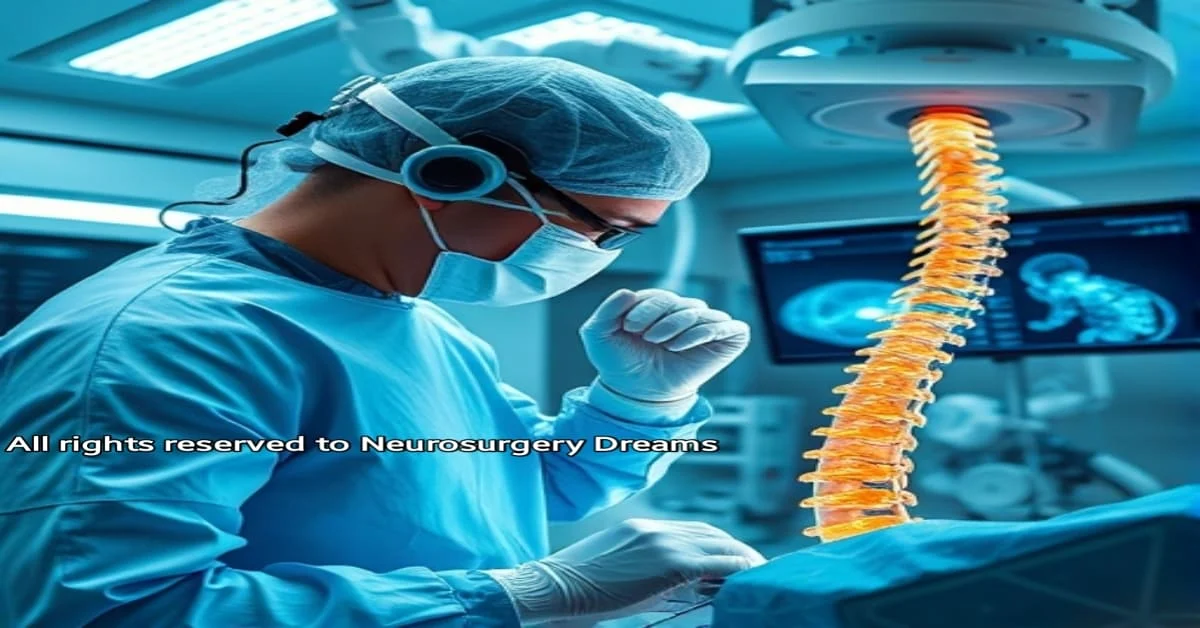Neurosurgical Approaches to Spinal Cord Injuries: Techniques, Challenges, and Future Directions
Introduction
Spinal cord injuries (SCI) represent a serious and life-changing event, often leading to paralysis, loss of motor function, and diminished quality of life. SCI typically occurs due to trauma, such as accidents, falls, or sports injuries, but it can also result from diseases like tumors, infections, and degenerative conditions. Neurosurgical intervention plays a key role in managing spinal cord injuries, focusing on stabilizing the spine, decompressing neural structures, and preventing further neurological damage. This article will explore current neurosurgical techniques, challenges in treating SCI, and future research directions aimed at improving patient outcomes.
The Impact of Spinal Cord Injury
Spinal cord injuries lead to profound physical, psychological, and social consequences. Patients with SCI often experience lifelong disabilities, including loss of sensation, motor control, and autonomic functions below the level of injury. Depending on the location and severity of the injury, SCI can result in paraplegia (paralysis of the lower body) or quadriplegia (paralysis of all four limbs). The psychological burden of SCI is also significant, with many patients experiencing depression, anxiety, and social isolation. Rehabilitation and psychological support are critical in helping individuals cope with these challenges.
Diagnosis of Spinal Cord Injuries
Accurate diagnosis is essential for guiding neurosurgical treatment and improving outcomes for patients with spinal cord injuries. Diagnostic tools include:
- Clinical Assessment: A detailed clinical history and physical examination are crucial in assessing the extent of neurological damage, including sensory and motor function.
- Radiographic Imaging: Imaging techniques like X-rays, CT scans, and MRIs are used to visualize spinal fractures, dislocations, and soft tissue damage, helping to determine the best surgical approach.
- Neurological Monitoring: In some cases, intraoperative monitoring of spinal cord function may be performed to assess the integrity of neural pathways during surgery.
Neurosurgical Techniques in SCI
Neurosurgery for spinal cord injuries aims to achieve several objectives: decompressing the spinal cord, stabilizing the spine, and promoting the best possible recovery. Several surgical approaches are employed based on the type, location, and severity of the injury.
1. Decompression Surgery
Decompression is one of the most common surgical procedures for spinal cord injuries, particularly in cases where the injury is caused by a herniated disc, fractured vertebra, or other structures compressing the spinal cord. This procedure involves removing the source of compression to restore blood flow and reduce further damage to the spinal cord. Techniques such as laminectomy (removal of part of the vertebra) or discectomy (removal of a herniated disc) are commonly used in decompression surgery.
2. Spinal Fusion Surgery
Spinal fusion is often performed in conjunction with decompression surgery to stabilize the spine and prevent further injury. During spinal fusion, two or more vertebrae are fused together using bone grafts or metal rods and screws. This technique helps to maintain spinal alignment and prevent abnormal movement that could worsen the injury. Spinal fusion is particularly important for patients with fractures or dislocations that destabilize the spine.
3. Minimally Invasive Techniques
Minimally invasive spinal surgery has become increasingly popular in the management of SCI due to its reduced recovery time and lower risk of complications. These techniques involve small incisions and the use of advanced imaging technology to guide the surgeon during the procedure. Minimally invasive spinal decompression, for example, allows for the removal of disc herniations or bone spurs with less tissue disruption, resulting in a faster recovery and less pain for the patient.
4. Stem Cell Therapy and Regenerative Medicine
One of the most promising areas in spinal cord injury research is the application of stem cells and regenerative medicine. Stem cells have the potential to repair damaged spinal cord tissue and restore lost function. While clinical applications are still in the experimental stages, early trials have shown that stem cell therapies can promote tissue repair, reduce inflammation, and improve motor function in animal models. Ongoing research is investigating the use of stem cells to promote spinal cord regeneration in humans, with the hope that these therapies will lead to new treatments for SCI patients in the future.
Challenges in Neurosurgery for Spinal Cord Injuries
Despite advances in surgical techniques, treating spinal cord injuries remains a significant challenge. Some of the key obstacles include:
- Complexity of Injury: Spinal cord injuries vary widely in terms of location, severity, and underlying causes, making each case unique and requiring tailored treatment strategies.
- Neurological Recovery: While surgery can stabilize the spine and prevent further damage, recovery of lost motor and sensory function is often limited. The spinal cord's ability to regenerate is limited, and many patients experience permanent deficits despite surgical intervention.
- Postoperative Complications: Surgical complications, such as infection, blood clots, and hardware failure, can impede recovery and prolong rehabilitation. These complications require careful management to minimize long-term effects.
The Future of Spinal Cord Injury Treatment
The future of spinal cord injury treatment holds great promise, particularly with the continued development of advanced surgical techniques and regenerative therapies. In addition to stem cell therapy, other areas of research include:
- Neurostimulation: Techniques like epidural spinal cord stimulation (ESCS) are being studied to help restore movement and function in patients with SCI by stimulating the spinal cord with electrical impulses.
- Exoskeletons: Robotic exoskeletons that enable patients to stand and walk again are being developed and tested in clinical trials. These devices are offering new hope for those with severe spinal cord injuries.
- Gene Therapy: Gene therapy holds the potential to promote spinal cord regeneration and repair by introducing specific genes into the spinal cord to encourage healing and tissue regeneration.
Conclusion
Neurosurgical approaches to spinal cord injuries have advanced significantly, offering patients better outcomes and improved quality of life. While challenges remain, ongoing research and the development of innovative technologies provide hope for future treatments that could lead to functional recovery and long-term improvements. As the field continues to evolve, spinal cord injury patients may see even greater opportunities for healing and recovery.

